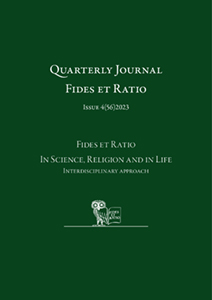Abstract
In this article, the author attempts to answer the question of whether it is possible to speak of insight in individuals with histrionic personality disorder. In principle, this question is rhetorical, since researchers, and not only psychoanalytic ones, have long had no doubt that the answer to this question is „no”. However, it is worth asking the question again and answering it in the context of a very specific group of women whose symptoms manifest themselves in places of religious worship. People associated with theology, especially clergymen, describe such people as functioning in the „spirit of Jezebel,” the amoral queen described in the Bible. The author of the article attempts to look at this phenomenon with the help of an imposing analogy of the characterization of Jezebel in women with histrionic personality disorder. Highlighting the danger that these individuals pose in places of worship in the area of respect for the sacrum, the author tries to explain the motivations for their actions. This allows us to look at them as individuals who hide inner despair under the mask of unconscious defenses, most often in the form of sexualizing even formal relationships.
References
Allen, J.G., Fonagy, P., Bateman, A.W. (2014). Mentalizowanie w praktyce klinicznej. Kraków: Wydawnictwo Uniwersytetu Jagiellońskiego.
Apokalipsa św. Jana, (2018). Poznań: Pallotinum.
Biblia Tysiąclecia, (2014). Poznań: Pallotinum.
Bollas, Ch. (1999). Hysteria. London: Routledge.
Bollas, Ch. (1987). The Shadow of the Object Psychoanalysis of the Unthought Known. New York: Columbia Univeristy Press.
Curyło, A. Przeciwprzeniesienie. (From:) https://skraweknieba.com.pl/materialy-szkoleniowe/adam-curylo-przeciwprzeniesienie/, (access: 08.10.2023).
Diagnostic and Statistical Manual of Mental Disorders, fifth edition (DSM-5). (2013). VA: American Psychiatric Association.
de Folch, T.E. (1984). The hysteric’s use and misuse of observation. The International Journal of Psychoanalysis, 65(4), 399-410.
ICD-11 revision. World Health Organization. https://icd.who.int/en, (dostęp: 08.10.2023).
Lewis, K.C., Mastico, E.R. (2017). Histrionic Personality Disorder. (In:) V. Zeigler-Hill, T. Shackelford, T. (red.) Encyclopedia of Personality and Individual Differences, 1-9, Springer. (Za:) https://link.springer.com/referenceworkentry/10.1007/978-3-319-28099-8_590-1. (access: 08.10.2023).
Marszał, M. (2015). Mentalizacja w kontekście przywiązania. Zdolność do rozumienia siebie i innych u osób z osobowością borderline. Warszawa: Difin.
Millon, T. Davis, R. (2005). Zaburzenia osobowości we współczesnym świecie. Warszawa: Instytut Psychologii Zdrowia.
Millon, T., Grossman, S., Millon, C., Meagher, S., Ramnath, R. (2004). The histrionic personality. (W:) Personality disorders in modern life, 292-329. Hoboken: Wiley.
O’Donohue, W., Bowers, A.H. (2006). Pathways to false allegations of sexual harassment. The Journal of Investigative Psychology and Offender Profiling, 3, 47-74. https://doi.org/10.1080/15228932.2012.650071
Steiner, J. (2017). Psychiczny azyl. Patologiczna organizacja osobowości u pacjentów psychotycznych, nerwicowych i borderline. Gdańsk: GWP.
Sulz, S. (2010). Histeria I: osobowość histrioniczna. Wyzwanie dla psychoterapii. Nervenarzt, 81, 879-88.

